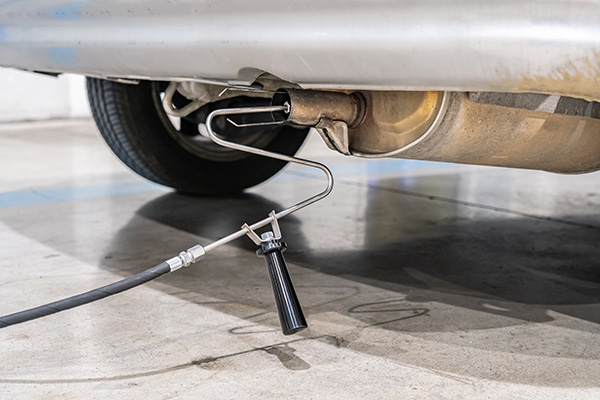
When most drivers think about fuel economy or emissions, they tend to focus on visible components, such as the engine, air filters, or exhaust. However, one of the most influential parts in regulating how your car burns fuel and controls emissions is something small and often overlooked: the oxygen sensor.
The oxygen sensor, or O2 sensor, monitors the level of oxygen in your vehicle's exhaust gases. This information is critical to how the engine control unit (ECU) determines the air-to-fuel ratio. If the sensor isn't working properly, it can throw everything out of balance, affecting how efficiently your car runs and how cleanly it burns fuel.
How the Oxygen Sensor Works
Your car’s engine needs the right mix of air and fuel to operate efficiently. Too much fuel (a rich mixture) or too little fuel (a lean mixture) can reduce power, harm fuel economy, and increase emissions. The oxygen sensor sits in the exhaust system and measures how much unburned oxygen is present after combustion.
This sensor sends real-time data to the ECU, which adjusts fuel delivery accordingly. In newer vehicles, there are multiple sensors before and after the catalytic converter to provide even more precise control.
Symptoms of a Failing Oxygen Sensor
A failing oxygen sensor won’t usually make loud noises or cause obvious mechanical problems at first. Instead, the symptoms are more subtle and develop over time. You might notice a drop in fuel economy even though your driving habits haven’t changed. The engine might feel sluggish, hesitate during acceleration, or idle roughly.
The check engine light often comes on when an oxygen sensor starts to fail. A diagnostic scan will typically reveal an error code pointing directly to the sensor’s performance or response time. Ignoring these warnings can lead to more serious issues later.
Fuel Economy Takes a Hit
One of the main jobs of the oxygen sensor is to help maintain a balanced air-fuel mixture. When the sensor fails, the engine may receive too much or too little fuel. Running rich burns extra gasoline and lowers your miles per gallon. In some cases, drivers lose several miles per gallon without realizing the cause.
In areas like Merritt Island, where stop-and-go traffic is common, poor fuel economy adds up quickly. You could end up spending significantly more on gas without understanding why, especially if the oxygen sensor is silently underperforming in the background.
Emissions Problems and Environmental Impact
An oxygen sensor that isn’t working properly can allow the engine to run inefficiently, which increases the amount of unburned fuel released into the exhaust system. This raises the level of hydrocarbons and carbon monoxide being emitted, and it may cause your vehicle to fail an emissions or smog test.
The catalytic converter also suffers. When an engine runs rich for too long, it overwhelms the converter with excess fuel, leading to overheating and potential damage. Since catalytic converters are expensive to replace, catching an oxygen sensor issue early can prevent larger repair bills down the road.
When Should You Replace Your Oxygen Sensor
Most vehicles are designed to have their oxygen sensors replaced every 60,000 to 100,000 miles, depending on the manufacturer’s guidelines. However, if you notice any signs like reduced fuel efficiency, rough engine performance, or a persistent check engine light, it’s worth having the sensor inspected sooner.
Our technicians use a scan tool to evaluate the sensor’s response and voltage readings. If it’s slow to respond or returns erratic data, replacement is the best option. Fortunately, oxygen sensor replacement is a relatively simple and inexpensive repair.
Trust Robbie’s At Your Service in Merritt Island, FL
Maintaining peak fuel economy and minimizing emissions isn’t just about driving habits—it’s also about keeping critical components like the oxygen sensor in good working condition. Don’t let a small part quietly rob your wallet and increase your environmental impact.
Call Robbie’s At Your Service in Merritt Island, FL, today to schedule an inspection or diagnostic test. Our skilled technicians can identify and repair oxygen sensor issues before they lead to more significant problems, ensuring your vehicle remains efficient and reliable.